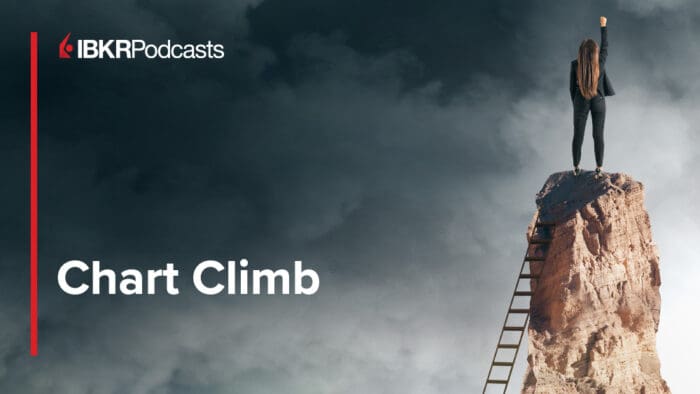IBKR clients can now purchase contracts based on their own expectations regarding questions about economic data, capital markets, central banks, sovereign debt and climate. These contracts include Yes or No answers to questions about published outcomes, such as will job creation exceed a specified number. Investors who purchase a contract with the correct Yes or No answer receive a payout while both parties receive coupon payments similar to interest, which serve as income streams. Clients can purchase the contracts through ForecastEx, an IBKR affiliate that operates both a Designated Contract Market and a Derivative Clearing Organization licensed by the CFTC. Macroeconomic and climate considerations can significantly impact portfolios, and until now, there hasn’t been a convenient way to manage these risks. ForecastEx, however, makes it possible to complete near-term investments on pending data releases as well as pairings on the longer-term evolution of the economy or climate trends.
ForecastEx is an innovative platform with unique features. Contracts are available with short, medium and long-term durations. They have low fees and provide money market-like coupon yields for contracts held overnight. The coupon yield is distributed throughout the life of the contract, providing competitive, and in some cases, above market rates to investors. As the value of the contracts increase or decrease, the corresponding coupon payments are adjusted proportionally. The exchange collects only one charge per pairing that is baked into each contract order, effectively half a penny on each Yes and No contract.
Available forecast contracts are based on data releases from reputable providers such as government agencies, central banks and other organizations. The contracts include some of the most followed indicators, including nonfarm payrolls, retail sales, the Consumer Price Index, housing starts, central bank interest rates, unemployment claims, sovereign debt measures, global temperatures and more.
Each forecast contract uses official data releases with contract settlements available as soon as the next publication to as far as several years out for some indicators. This makes it possible to enter a near-term pairing on a pending data release as well as make a longer-term investment on the evolution of the economy.
How do Forecast Contracts work?
ForecastEx users can enter Yes and No bids on questions, such as will an economic release be higher than a specific value. The positions are executed when ForecastEx receives bids for both Yes and No positions in the market. The combined Yes and No bids, including the one cent fee, total $1.01. At settlement, if the Yes answer is correct, the holder of the Yes position receives $1.00 per contract, and the No Position receives $0, and vice versa. Both sides do receive coupon payments, however. The exchange collects one cent per pairing and pays out the remaining $1.00. No additional exchange, clearing, market data, premiums or brokerage payments are charged. ForecastEx’s inclusive fee structure of just one cent per contract is advantageous for investors and helps level the playing field for forecast contract buyers. Additionally, ForecastEx’s income stream incentivizes contract buyers to hold the investments over the long haul.
Here is an example of fees and payouts. Assume a Yes contract buyer’s cost is 41 cents and the contract is correct when data is released. The contract owner makes 59 cents of profit or the difference in the $1 payout and the investors’ contract purchase cost of 41 cents. At the same time, the buyer of a No contract would have paid 60 cents and would have earned coupon payments. Broadly speaking, the more likely an outcome is to occur, the more expensive a Yes contract will be and the less likely it is to occur, the less expensive it will be.
In another example, we have the question will the US nonfarm payroll reading in September be higher than 150,000?
Clients may choose to buy a Yes contract if they estimate that the published outcome will exceed the chosen threshold and consider the odds favorable. Or they might buy a No contract if they anticipate the published outcome will fall short of that number while finding the pricing of the No attractive. Similar contracts would also be available with different jobs numbers and have prices that reflect the likelihood of different outcomes.
If the published print for nonfarm payrolls turns out to be 149,000, the Yes contract for 150,000 will be incorrect and will settle at zero. The investor who paid 75 cents for the Yes contract receives nothing other than the coupon payments on the contract, while the No contract correctly answered the question, his/her contract settles at $1.00. The investor who paid 26 cents makes 74 cents per contract, which represents the $1.00 payout minus the 26 cents paid to buy the No contract. Additionally, the investor, like the holder of the Yes contract, also receives coupon payments. If jobs do exceed 150,000, the owner of the Yes contract would receive the $1.00, making the profit 25 cents in addition to the coupon payments.
Closing a Position
Investors can only buy forecast contracts in order to open or close positions. To close a position prior to a settlement date, investors must buy an opposite contract. Assume an investor’s costs are 26 cents for a Yes contract in response to the question, Will initial weekly jobless claims for the week ending September 9 exceed 220,000? But the market changes so that prior to settlement, the Yes contract price increases to 70 cents, the investor could close the position by buying a No contract for 31 cents. In this type of situation, when investors close positions prior to settlement by purchasing the opposite contract, ForecastEx will pay the investor $1.00 for each Yes/No pair. In this example, the investor earns 43 cents per contract in profit, even before the outcome of the release is known. The profit is the difference in the total cost of the two contracts, or 57 cents, minus the $1.00 payout.
Likewise, assume an investor believes that they may have estimated incorrectly on an outcome as new data rolls in. Let’s say they paid 70 cents for the No contract in response to the same question: Will the September 9 initial weekly jobless claims number exceed 220,000? Now, however, the live price of that contract has fallen to 15 cents. Subsequent labor market developments have improved and the investor feels less pessimistic about the health of the labor market. Rather than taking a full loss on the contract, the investor decides to buy the Yes contract at the prevailing 86 cent cost to close out the contract. The investor has therefore spent $1.56 to purchase both the Yes and No contract, which then pays $1.00, resulting in a loss of 56 cents. As mentioned previously, however, the investor will have also received coupon payments.
Investors can see pricing and current probabilities of expected outcomes for economic data releases using ForecastEx. As data is published and as the economy evolves, the probability of a specific outcome occurring may change, as should its pricing. As more investors embrace the concept of economic forecasting and data collection methodologies improve over time, ForecastEx could become a vital tool to help investors in determining economic trends. The exchange effectively aggregates the diverse opinions of market participants into high-quality forecasts of future data releases. Investors can access this data at no cost.












Join The Conversation
For specific platform feedback and suggestions, please submit it directly to our team using these instructions.
If you have an account-specific question or concern, please reach out to Client Services.
We encourage you to look through our FAQs before posting. Your question may already be covered!